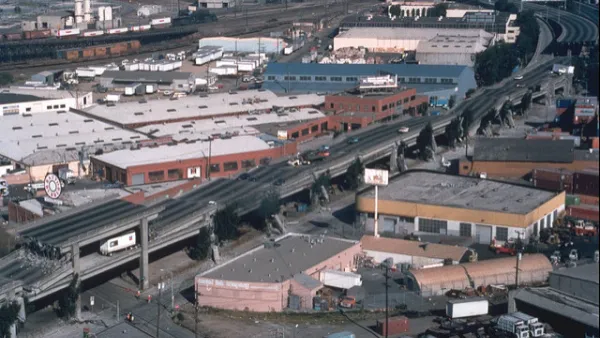Setting aside the debate about fracking's responsibility for swarms of earthquakes in states like Kansas, Texas, and Oklahoma, seismic experts are recognizing a need to rethink building safety.
"Earthquakes are synonymous with California to most Americans, but West Coasters might be surprised to learn they’re far from the new center of the seismic landscape in the United States," according to an article by Michael Corey.
The new capital of tremblers: Oklahoma. According to Corey's analysis for the Center for Investigative Reporting, "Oklahoma recorded more than three times as many earthquakes as California in 2014 and remains well ahead in 2015. Data from the U.S. Geological Survey shows that Oklahoma had 562 earthquakes of magnitude 3.0 or greater in 2014; California had 180. As of Jan. 31, Oklahoma recorded 76 earthquakes of that magnitude, compared with California’s 10."
Oklahoma even beat out Alaska in the number of recorded events—though Alaska is so remote that many seismic events elude detection.
The proliferation of earthquakes throughout the Midwest began in 2009, but so far none have inflicted deadly force. Still, the trend is forcing many experts to rethink seismic risk. Previously earthquake risk was calculated on a 50-year timeline to inform safety requirements recommended by the Building Seismic Safety Council. Now, however, "[a] U.S. Geological Survey team led by seismologist Mark Petersen is working on significant changes to the national hazard model to begin to address those questions. The team will propose several options for how to model earthquake risk in the next year, rather than over 50 years."
FULL STORY: Hey, California: Oklahoma had 3 times as many earthquakes in 2014

National Parks Layoffs Will Cause Communities to Lose Billions
Thousands of essential park workers were laid off this week, just before the busy spring break season.

Retro-silient?: America’s First “Eco-burb,” The Woodlands Turns 50
A master-planned community north of Houston offers lessons on green infrastructure and resilient design, but falls short of its founder’s lofty affordability and walkability goals.

Delivering for America Plan Will Downgrade Mail Service in at Least 49.5 Percent of Zip Codes
Republican and Democrat lawmakers criticize the plan for its disproportionate negative impact on rural communities.

Test News Post 1
This is a summary

Test News Headline 46
Test for the image on the front page.

Balancing Bombs and Butterflies: How the National Guard Protects a Rare Species
The National Guard at Fort Indiantown Gap uses GIS technology and land management strategies to balance military training with conservation efforts, ensuring the survival of the rare eastern regal fritillary butterfly.
Urban Design for Planners 1: Software Tools
This six-course series explores essential urban design concepts using open source software and equips planners with the tools they need to participate fully in the urban design process.
Planning for Universal Design
Learn the tools for implementing Universal Design in planning regulations.
EMC Planning Group, Inc.
Planetizen
Planetizen
Mpact (formerly Rail~Volution)
Great Falls Development Authority, Inc.
HUDs Office of Policy Development and Research
NYU Wagner Graduate School of Public Service




























